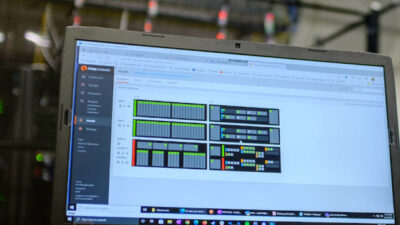The end of the year typically is a time when people review the past with an eye toward how they can improve the future.
For this supplement on industrial energy management, which is being published in conjunction with the December 2012 issue of Control Engineering, we’ve chosen to look at trends that figure to help manufacturers manage energy more efficiently in 2013 and beyond.
The supplement contains a cover feature on one company’s ingenious use of solar power, and interviews with three executives who are focused on helping manufacturers become more energy efficient.
From these pieces, the following conclusions can be drawn:
- Solar power is poised for mainstream use, and it can work in business settings.
- The Smart Grid remains a work-in-progress, but companies can derive real economic benefits by adopting Smart-Grid concepts now.
- There are promising efforts underway to create standards and best-practices for developing and executing successful industrial energy management programs.
When it comes to solar power, it obviously will be difficult to deploy in colder, sun-deprived climes. However, in the Southwestern U.S., where sun is plentiful, and rainy days are rare, the idea of using at least of some solar power is approaching no-brainer status.
Our cover story clearly makes that case. It’s the story of Moxa, a supplier of industrial Ethernet networking equipment, which has installed a solar-powered micro grid at its Brea-Calif.-based global sales and marketing headquarters. Not only is this system providing all of Moxa’s electric needs, it’s producing enough power for Moxa to sell the excess back to the local utility, thus turning a debit into a credit on the company’s balance sheet.
Energy management as revenue stream
Our interview with Arun Sinha, director of business development for Opto 22, touches on other ways companies can develop new revenue streams through shrewd energy management. Specifically, Sinha talks about exploiting the “demand-side” of the Smart Grid while waiting for utility companies to complete the roll out of the grid’s supply side.
Speaking of the Smart Grid’s supply side, our interview Tim Wallaert, director of marketing for the energy segment with Belden, provides a nice overview of the obstacles that continue to slow the grid’s full build out. Those hurdles include the requirement to show the potential payback from Smart Grid investments to utility shareholders and regulators, as well as the need for standards that will give utilities confidence that any smart equipment they purchase will work properly when connected with existing equipment.
Our final interview shows there’s positive movement on the standards front. That interview is with Fred Fendt, newly elected chairman of an organization called the U.S. Council for Energy Efficient Manufacturing (U.S. CEEM). Fendt and U.S. CEEM are not directly involved in efforts for developing communications standards for energy equipment. Instead, they are spearheading an effort that could have an even bigger impact when it comes to helping manufacturers deploy successful energy management programs.
U.S. CEEM is promoting the Superior Energy Performance (SEP) program, which provides manufacturers a way to be certified as superior performers in the energy management realm. The certification comes through documenting continuous success at reducing energy use over a period of at least three years. U.S. CEEM’s goal is to have these certified superior performers share their best practices for energy management with the group’s membership so the entire industry can benefit.
We’re hoping you benefit by reading this overview of energy management trends for 2013.



